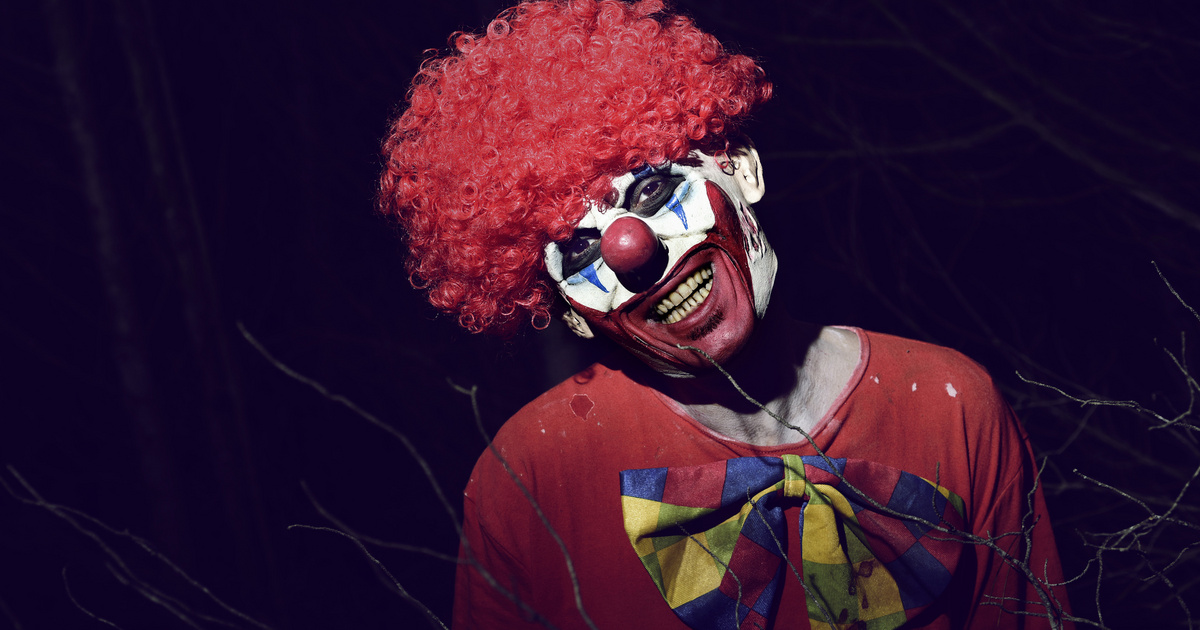Not only those who are friends with Stephen King can be afraid of clowns: clown phobias are more common than we think.
Surprisingly Many people find it creepy Characters with colorful faces, wigs, and red noses. Fear of clowns can develop into a real phobia, which also has a name: coulrophobia. It is estimated that 12% of the US population suffers from clown phobia.
Fear and trembling in the circus
A phobia is an irrational fear or an instinctive but intense fear of certain things, situations, or people. The fear can become so strong that it can affect behavior and daily life. The most common symptoms are a fast heartbeat, nausea, tremors, sweating, and trouble breathing. People with such reactions to clowns avoid events that are fun for the majority: circus performances and carnivals; Because for them, these are associated with increased stress and anxiety.
A bit of clown history
Court jesters were employed in ancient China, Egypt, Greece and Rome. Fools fun They often appeared at medieval carnivals and fairs, And to them according to unwritten rules Even mocking and insulting the ruler was permissible Even the fools of kings in the court could do that without much of a response. English buffoons appeared in the 16th century after Shakespeare named his funny characters.
Joseph Grimaldi, the first white-faced clown: terrifying or absurd?Wikimedia Commons
However, the ancestors of today’s jesters with painted faces were not court jesters, because their era was in the seventeenth and eighteenth centuries. The century is over. In the seventeenth century in Italy One of the permanent figures of the touring actors of the Commedia dell’arte she was joker, The defenseless, naive peasant boy. Like the other characters, Arlecchino often indulges in vulgar or crude jokes. The character of the clown developed out of him, but it was necessary Joseph Grimaldira, who expanded his clown role as an English actor, and using white face paint for the first time, which is still used by clowns today. Circus activist Philip Astley recognized this among horse figures as well to entertain the public, And clowns are very suitable for this: they distract the audience while rearranging the stage.
Harlequin and Augustus
The Classic white face clownHe could juggle, played instruments, and generally gave a very tidy impression, but did not shy away from a low-key sense of humor when needed. exactly the contrary August, the “colored” clown She wears colorful, oversized clothes, has potato ears, and jumps and tumbles. Clowns soon They became famous in circuses all over the world. Although the number was not originally created to entertain children, since the circus is mostly attended by children, for some reason it is widely believed that children love clowns. However, according to an investigation by the University of Sheffield, this is not true: they asked 250 children between the ages of 4 and 16 about their feelings towards clowns and found that The vast majority of them find clowns repulsive.
Fear of the unknown
So why do these figures with painted faces, which are meant to be funny, cause inexplicable and irrational fear in some people? There may be several factors behind this Behind the fear of clowns. The most popular idea is that Fear of the unknown The Root Cause: It’s impossible to tell what’s hiding behind the clown makeup, exaggerated features, and wide grin. A mask can also give the wearer a new identity, which may make them not feel bound by the basic rules of social communication. For those of you who are afraid of the clown, They may feel in danger And for this.
Freud and the Stranger
Sigmund Freud It was investigated already at the beginning of the twentieth century dread (Uncanny) The concept, which is “the kind of scary that can be traced back to something intimate, has been known for a long time.” So the thing that “is not strange, but a well-known phenomenon of spiritual life, which was removed in the process of repression.” According to Freud This feeling is easily evoked by puppets and wax figures (or even ghosts): representation of the man What’s in these things – or, in the case of the clown, in the mask – become lifeless, unknown, strange, And therefore terrifying. Some have one Unpleasant childhood experience Triggers these reactions, for others, the clown’s smile is key: we can experience cognitive dissonance in relation to this, because although a smile is a good thing, If someone is smiling all the time, it is not normal at all. The constancy and rigidity of facial expressions can also cause fear: if nothing is reflected on someone’s face, it can be frightening because we do not know what is going on inside.

Cooking for free is easy!
In her latest book, Anyu Mentes undertakes nothing less than putting it together 50 best free meal recipes. Along with his previous books, he delights his readers with a special diet with a total of 162 recipes.
Books at a discount Click hereIt can only be purchased online.
ad











































